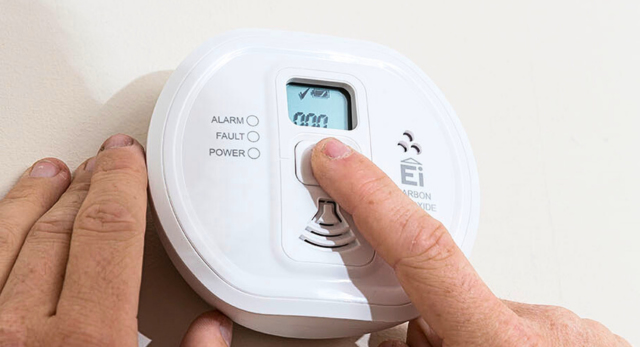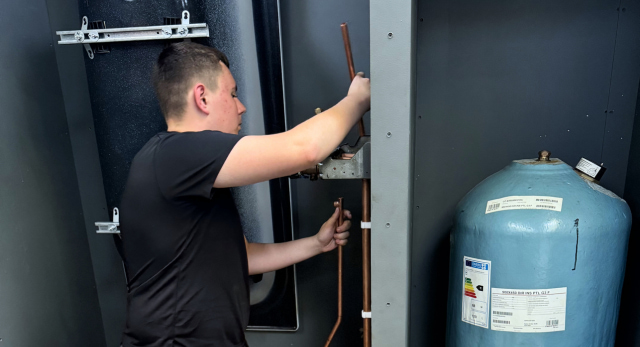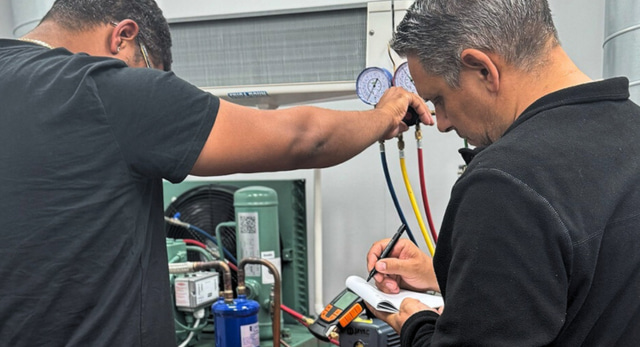Carbon monoxide (CO) is a serious concern for UK homeowners, landlords, tenants, and gas engineers. This article explains what CO is, its health dangers, the latest British safety laws and alarm requirements, key symptoms (including effects of low-level exposure), and best practices for testing and maintaining appliances. Backed by Logic4training’s industry knowledge and trusted resources, this article also links to hands-on guides and leading gas safety courses to keep you compliant, safe, and informed. Whether you aim to protect your home or advance your professional skills, you’ll find the expert, up-to-date advice you need in this essential resource.
What is Carbon Monoxide & Why is it Dangerous?
Carbon monoxide forms from the incomplete burning of carbon-based fuels such as gas, oil, wood, and coal. Because one cannot see, smell, or taste it, the gas is dubbed a “silent killer”. When breathed in, CO binds with haemoglobin in the blood, preventing oxygen delivery and leading to tissue hypoxia. Even low levels may cause damage over time.
Low-Level Carbon Monoxide Exposure
Growing awareness exists around long-term, low-level CO exposure. Even where there are no acute symptoms, continual exposure can lead to sustained health problems such as memory loss or mood disturbances:
- Standard detectors may not register very low, chronic CO levels, but the risks still exist.
- Households near busy roads, with faulty appliances, or old flues are especially susceptible.
- Symptoms often resolve upon leaving the premises.
Findings from the CO low-level exposure study illustrate how persistent but subtle concentrations can result in significant harm, particularly for vulnerable individuals like the elderly, children, or those with chronic illnesses.
Symptoms of Carbon Monoxide Poisoning
CO poisoning often mimics common illnesses or can even appear flu-like. Recognising its symptoms early can be life-saving:
- Mild exposure: Headaches, dizziness, nausea, light-headedness, fatigue, and confusion. These may be mistaken for food poisoning or viral infections.
- Moderate exposure: Muscle weakness, balance issues, drowsiness or confusion, mood changes, memory loss, and visual disturbances.
- Severe exposure: Seizures, loss of consciousness, coma, or death.
- Chronic low-level exposure: Persistent headaches, difficulties concentrating, mood changes, and memory problems may develop without clear warning signs.
- Warning sign: If symptoms improve when you leave the property, or if others in the home or pets suffer similar symptoms, CO poisoning should be suspected.
If CO poisoning is suspected, you should evacuate the property immediately for fresh air, and call 999 for emergency medical assistance.
Carbon Monoxide Regulations
The UK’s carbon monoxide (CO) safety regulations focus on protecting residents through strict requirements and evolving guidance for landlords. Here’s a clear, up-to-date overview of the current regulations.
Where CO Alarms Must Be Fitted
Landlords (both private and social) are legally required to install a carbon monoxide alarm in every room used as living accommodation that contains a fixed combustion appliance. This includes:
- Gas boilers
- Coal or wood fires
- Wood-burning or pellet stoves
- Oil or biomass heating systems
Gas cookers are specifically excluded from the requirement, but landlords are encouraged to consider extra protection in homes with multiple or older appliances.
Standards and Positioning
All carbon monoxide alarms installed must comply with British Standard BS EN 50291. For optimal performance, they should be positioned at head height, generally between one and three metres from the relevant appliance, always in line with the manufacturer’s guidance.
It is important to note that there is no national requirement specifying mains-powered over battery-powered alarms; either option is permitted, provided the device itself meets the required standards.
Testing, Repairs, and Record-Keeping
When a new tenancy begins, landlords are required to test all installed alarms, including both smoke and carbon monoxide detectors, to ensure that every device is working properly. It is essential that tenants are informed about where each alarm is located within the property, as well as the correct procedures for testing them. If a tenant subsequently reports that an alarm is faulty or not functioning correctly, the landlord has a legal obligation to repair or replace the device as soon as is reasonably practicable. To demonstrate compliance with current regulations, landlords should maintain accurate and dated records of every installation, routine test, and maintenance action carried out on these alarms.
Regulatory Scope and Enforcement
The Smoke and Carbon Monoxide Alarm Regulations 2022 apply to all private rentals, social housing, Houses in Multiple Occupation (HMOs), and housing association properties. This closes previous loopholes and ensures consistent coverage for all tenants, regardless of property type.
Enforcement is carried out by local housing authorities. If a property fails to comply, a remedial notice will be served. The landlord then has 28 days to act; failure to do so may result in the authority fitting alarms and charging the landlord for all related costs.
Penalties for Non-Compliance
Landlords can face fines up to £5,000 per breach if they do not act on a remedial notice or fail to comply with the alarm regulations. Penalties can be cumulative for each property or incident. Some councils offer a reduced penalty fee for swift payment in first-offence cases, but repeat offences are more heavily sanctioned.
Tenant Rights and Responsibilities
Tenants have the right to request the installation or replacement of carbon monoxide alarms if they are missing or if existing devices are not working properly. Regular weekly testing of these alarms is strongly advised, and tenants should notify their landlord promptly if any defects or issues are detected. If a landlord neglects or refuses to address reasonable requests regarding alarm installation or maintenance, tenants are entitled to seek assistance from their local housing authority, which can enforce compliance with safety regulations.
Why These Changes Matter
Expanded regulations came in response to a series of preventable CO incidents and recommendations from safety campaigns and public health research. Consistent, universal coverage in rented homes aims to prevent illness and deaths from CO exposure and provide clear, actionable standards for both landlords and tenants.
Compliance is both a legal duty and a moral responsibility, safeguarding tenants and protecting landlords from prosecution and reputational risk.
Best Practice for Landlords
- Keep clear records of alarm locations and all testing/maintenance dates.
- Show incoming tenants how to test alarms and what to do if a fault is found.
- Regularly review up-to-date guidance via the Government’s official Smoke and Carbon Monoxide Alarm Regulations.
By following these regulations, landlords protect their tenants, remain compliant, and help prevent carbon monoxide tragedies in UK homes.
For more details on precise landlord obligations, see the UK Government’s official guidelines.
Carbon Monoxide Alarms: Choosing, Installing, and Testing
Choosing an Alarm
- Only use CO alarms compliant with British Standards (BS EN 50291).
- Select audible alarms (not just indicator lights), as CO often incapacitates before symptoms can be detected visually.
- Avoid combination smoke/CO alarms unless both are independently certified.
- Look for a battery back-up even if mains-powered.
Installation Tips
- Fit alarms at head height (where air circulates) and preferably between 1-3 metres of the appliance, but follow the manufacturer’s recommendations.
- Avoid corners, behind furniture, or in bathrooms.
Testing and Maintenance
- Test alarms weekly using the test button.
- Replace batteries as soon as “low battery” warnings sound.
- Replace the entire alarm every 5-7 years or as advised by the manufacturer.
Carbon Monoxide Appliance Testing: The Engineer’s Role
Professional testing is essential when an alarm sounds, symptoms arise, or during regular maintenance.
What Does CO Appliance Testing Involve?
- Visual inspection: Looking to see if all combustion appliances and flues are free from blockages, corrosion, or damage.
- Atmosphere sampling: Engineers use portable electronic analysers to measure ambient CO and pinpoint sources, following [BS 7967] guidance.
- Combustion analysis: Testing appliance performance and flue gas for dangerous emissions.
- Record keeping: Detailed documentation such as risk assessments, findings, and remedial actions.
Only gas engineers with ACS (Accredited Certification Scheme) credentials can legally and competently investigate and repair suspect appliances.
Logic4training’s CMDDA1 course is recommended for engineers aiming to specialise in CO investigation and testing.
Why Regular Training & Certification Matters
Regular training and professional certification are fundamental in maintaining high standards of gas safety and carbon monoxide prevention. Legal compliance is at the core of this requirement, as only certified engineers are authorised to conduct essential safety checks, such as carbon monoxide testing and appliance inspections, ensuring that every assessment and intervention is recognised and enforceable under current regulations. This commitment to compliance offers reassurance not only to engineers, but also to landlords, property owners, and tenants, reinforcing confidence that all critical work is undertaken correctly and safely.
Staying up to date with the latest gas safety training is also essential for best practice adherence. The world of gas safety is ever-evolving, with new risks emerging and industry standards advancing. Engineers who regularly refresh their knowledge are better equipped to identify, assess, and mitigate the dangers of carbon monoxide, whether in private residences, public buildings, or commercial environments. This approach reduces the likelihood of dangerous incidents and fosters safer living and working spaces.
Continuous professional development goes beyond simply meeting requirements. It is about keeping ahead of any updates to British Standards and adapting to shifts in industry best practice. By maintaining this proactive attitude, engineers enhance their professional standing, remain legally compliant, and are well-prepared to tackle advances in technology and changes in legal obligations.
Our Commitment to CO Safety
- Years of experience delivering industry-leading, accredited training underscore our authority on gas safety and carbon monoxide prevention.
- Our partnerships with certifying bodies, appliance manufacturers, and technical experts ensure our knowledge remains current, relevant, and trusted.
- As a central hub for both engineers and the general public, our advice consistently references the latest statutes and scientific consensus.
- Visit our Insights page for up-to-date news, guides, and regulatory analysis.
To learn more about carbon monoxide safety and undertake practical, accredited training, visit our CMDDA1 carbon monoxide training course.
FAQs
Do I need a carbon monoxide alarm in every room?
No. UK law requires alarms in every room with a fixed combustion appliance, except gas cookers. However, extra alarms can boost safety.
What are the first signs of carbon monoxide poisoning?
Common early symptoms are headaches, dizziness, nausea, fatigue, and confusion, which are often mistaken for other minor illnesses.
How often should CO alarms be tested?
Every week. Test each alarm using its test button and replace batteries immediately if signalled.
What should I do if my CO alarm goes off?
Leave the premises at once, get into fresh air, call emergency services, and do not re-enter until a professional says it’s safe.
Where can I find more information and training?
Visit Logic4training’s gas training courses or explore our Insights for regular blog updates and expert guidance. Also, you can find more information from the UK Government’s official guidelines.









